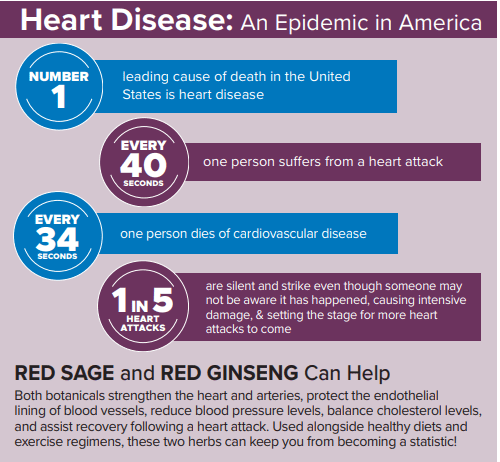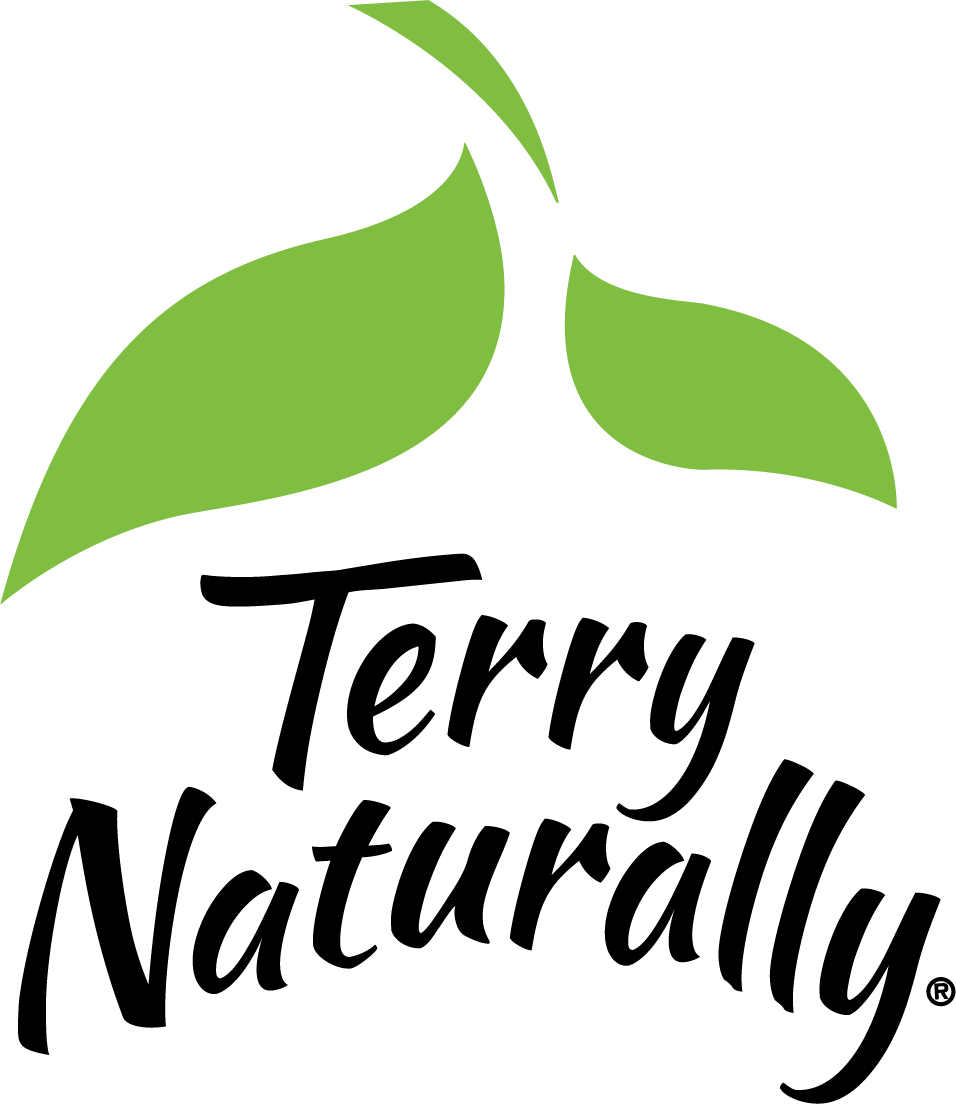You may have already heard the statistics about heart disease: it is the number one killer in the United States, one person dies of cardiovascular disease every 34 seconds, and one in every five deaths is due to heart-related conditions.
Fortunately, as grim as those numbers are, heart disease can be stopped. For starters, reducing processed, sodium-heavy foods from your diet and adding anti-inflammatory, whole foods in their place, plus getting moderate exercise regularly can make a world of difference. But to get an even greater advantage in this fight, adding red sage (also known as “Danshen”) and red ginseng to your daily regimen could tilt the balance in your favor when it comes to heart health.
Red Sage: A Traditional Choice for Cardio Health
Red sage (Salvia miltiorrhiza) has been used in traditional Chinese medicine for thousands of years as a heart-invigorating and restoring natural medicine. Popularly known as Danshen, it has an astonishing level of interest worldwide and has been extensively studied, especially in the past 20 years, in scientific and clinical settings.
During that time, over 200 separate compounds have been identified in red sage, all working through a variety of pathways and offering a multi-pronged approach to the multiple conditions that encompass heart disease. But one of the strongest ways it works is through its antioxidant actions.
I think that because the word ‘antioxidant’ has become so popular, it’s easy to discount how important it is to stop oxidative damage that triggers inflammation and damages the heart and arteries. And red sage is one of the most potent antioxidants, especially for cardiovascular concerns.
Reduces Cholesterol Oxidation, Keeps Blood Vessels Clear
Red sage inhibits the actions of oxidases, enzymes that make low-density lipoproteins (LDL) cholesterol ‘stickier’ in the blood vessels and cause blood clotting. It also boosts levels of glutathione peroxidase and superoxide dismutase, two of the body’s strong natural antioxidant defenders. Additionally, red sage increases levels of nitric oxide, another natural compound that acts as a vasodilator, opening blood vessels and reducing blood pressure.
Increases Cardio-Protective Antioxidants
The fact that red sage can reduce oxidation and reactive oxygen species like superoxide (not to be confused with the beneficial antioxidant superoxide dismutase, which neutralizes superoxide) is critically important. Pro-oxidants– whether they are generated by conditions inside the body or due to reasons like diet or environment, can be extremely dangerous for the heart. Oxidative stress directly attacks heart and blood vessel cells, hinders the way the heart functions, and neutralizes beneficial compounds like nitric oxide. By addressing this, red sage has incredible potential to strengthen and protect the heart and cardiovascular system.
For example, research has found that red sage also prevents cardiac fibrosis (the excessive growth of muscle tissue in the heart following a heart attack), protects muscle cells following cardiac injury, reduces the impact of stroke injuries, helps renew neural stem cells, and keeps the blood-brain barrier functioning properly by strengthening the structures of blood vessels.
Improves Angina, Blood Pressure, and Inflammatory Markers
Multiple human clinical trials have documented beneficial effects for red sage. One assessment of the botanical reported that the symptoms and physical markers of cardiovascular disease, including inflammatory markers, electrocardiogram readings, blood pressure levels, overall cardiac function, and angina, improved in almost 80 percent of the reviewed human trials.
In fact, regarding angina (when the heart doesn’t get enough blood or oxygen, leading to characteristic bouts of intense chest pain), another review of 60 clinical studies found red sage was more effective than isosorbide dinitrate, a commonly prescribed medication for this condition.
Red Ginseng–Energizing for the Heart
It might surprise people–even those who have long relied on this herbal adaptogen for energy and focus–to learn that red ginseng (Panax ginseng) has strong cardiostrengthening properties. If that’s the case, consider it a bonus that red ginseng has also been protecting your heart.
Boosts Helpful Nitric Oxide Levels
Like red sage, red ginseng boosts levels of nitric oxide, the antioxidant compound that keeps blood vessels relaxed, open, flexible, and strong.
Scientific research has also shown that red ginseng’s ability to boost nitric oxide protects against left ventricular hypertrophy, the thickening of the walls in the heart’s main chamber. This section of the heart pumps oxygen-rich blood into the aorta, so when the walls of that chamber get thicker, it makes it difficult for the heart muscle to work properly. The result can either be low oxygen levels to the heart or the development of arrhythmia, an irregular heartbeat.
Lowers Blood Pressure, Improves Vascular Tone
Not surprisingly, the increase in nitric oxide production due to red ginseng lowers blood pressure levels and potentially inhibits clotting and hardening of the arteries (atherosclerosis), too. The botanical induces nitric oxide production from the endothelial cells in the blood vessels, meaning that the compound is immediately available right where it is needed most.
Assists in Recovery from Heart Attack
Additionally, red ginseng may help individuals recover faster from cardiac events. Clinical research found the botanical can improve an individual’s coronary flow reserve–the level of increased blood flow to the coronary arteries under exertion. A normal value is about 2 to 2.5, but those with at least 2 or above in the months following a heart attack have a much better chance of longterm recovery. In this case, patients who’d suffered a heart attack, but supplemented with red ginseng afterward, scored an average of 2.8 in eight months.
Studies have also featured both red sage and red ginseng working as synergistic botanicals. Clinical research has found that the two together helped people recover faster, inhibited inflammatory C-reactive protein levels, and kept blood vessels flexible following exercise.
The red sage and red ginseng I prefer are hydroponically grown, which keeps them away from dangerous pesticides and other chemicals and can help enhance and concentrate their levels of key compounds.

Protect and Strengthen Your Heart
Any cardio condition–high blood pressure, angina, and especially a previous heart attack, can make you feel extremely vulnerable. But the good news is you can do something. These two botanicals can help you rediscover what it means to be vibrant and healthy again. With red sage and red ginseng, you can improve the strength of your heart, the flexibility of your arteries, and the direction of your blood pressure and cholesterol numbers.
